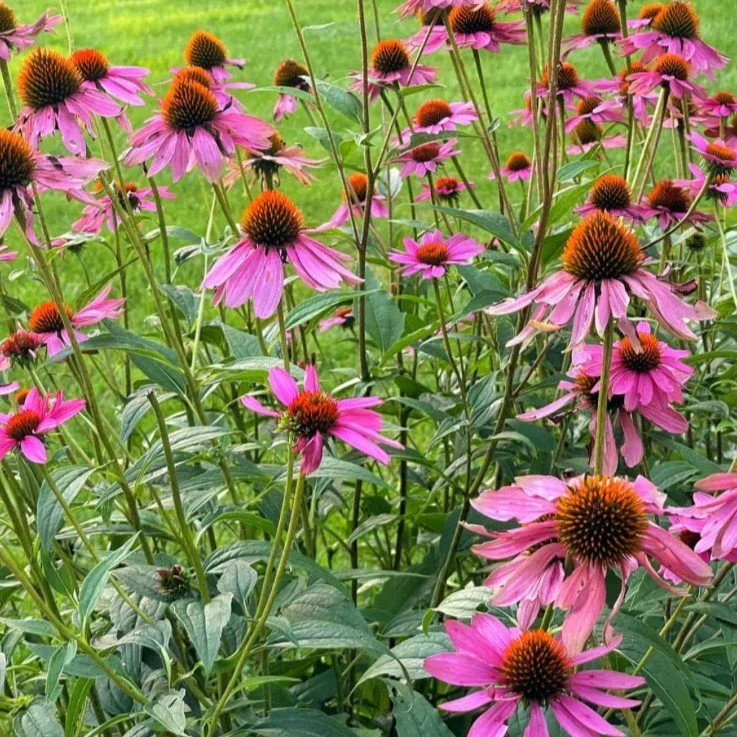Best pollinators for containers
A lovely group of Echinacea/ Coneflower
The best pollinators for containers are those that compliment each other in bloom time and lifestyle. Containers are an excellent option for those lacking in-ground garden space and can brighten up balconies, patios and porches beautifully. Finding the right pollinators comes down to a few factors.
1) Look for native perennials to use as anchors. These will require deeper containers as they will return again and again and need to set down deeper roots. Natives are especially wonderful because they are already adapted to your individual growing climate and will require less water and maintenance.
2) Select pollinators that bloom at different times. Flowers that bloom in the spring may finish up as your herbs begin to flower in the summer. This is not only visually interesting, but will also provide an ongoing source of pollen and nectar to bees, birds and butterflies.
3) Choose pollinators that won’t hog all the real estate. Flowering mint is a wonderful pollinator but will spread fast, sending horizontal runners through the soil and making a roommate situation less than ideal for fellow pollinators. Mint needs to be left in its own container but the good news is that it’s beautiful, survives just about any weather condition and will reward you with continued growth.
Now that we’ve discussed the container, let’s talk about which pollinators are among my favorites!
Rudbeckia, or ‘Black-eyed Susan’ is a favorite. The striking yellow flowers stand out all summer long, making it a favorite of butterflies. It’s an easy to grow native that has been adapted to zones 3-9. It makes an excellent cut flower too. I really love the height on Rudbeckia. I plant them in my vegetable gardens for interest and to bring in the pollinators, and at 2’ tall, there’s simply no missing them!
Echinacea blooms from spring to late summer and is also referred to as coneflower. Pollinators love this flower because it has a giant target on which to land! While you typically find it in meadows and prairies, it also makes for a wonderful container pollinator because of the striking pink, purple and white varieties. As an added bonus, purple coneflower smells like honey!
Dill is a wonderful pollinator for many reasons. It attracts black swallowtail caterpillars, bees and butterflies. It re-seeds easily and goes to flower rather quickly in the summer. Dill is a uniquely beautiful flowering herb~ it almost resembles a small fireworks display in the garden. I love adding a combination of flowers and herbs to container pollinator gardens because the play on texture is incredible.
Basil is another herb that pollinators find irresistible. No matter how often I clip my basil leaves in the summer, it inevitably produces flower heads at the top of my basil stems. Sometimes I clip them to remind the plant that I’m not finished enjoying it… other times, I let the entire plant go to flower so that the pollinators enjoy it.
Geraniums are favored by hummingbirds for their nectar, especially when paired with other flowering pollinators. They are easy to grow in containers, are long flowering, and they compliment other pollinators nicely.
Cosmos attract bees and butterflies because of their tall stems and open flowering shape. They grow easily from seed in warm temperatures. Native bees enjoy them for their pollen and nectar and birds enjoy the seed heads once flowering is finished. I love to grow these in a container because of their height, wispy flowers and vase life! We always say, “Some for the bees, some for me.”
Verbena flowers well into the fall and is loved by bees and butterflies. It doesn’t require a lot of water or maintenance. Monarch butterflies love verbena! I like to add verbena to containers when I need to fill in space and add interesting texture.

